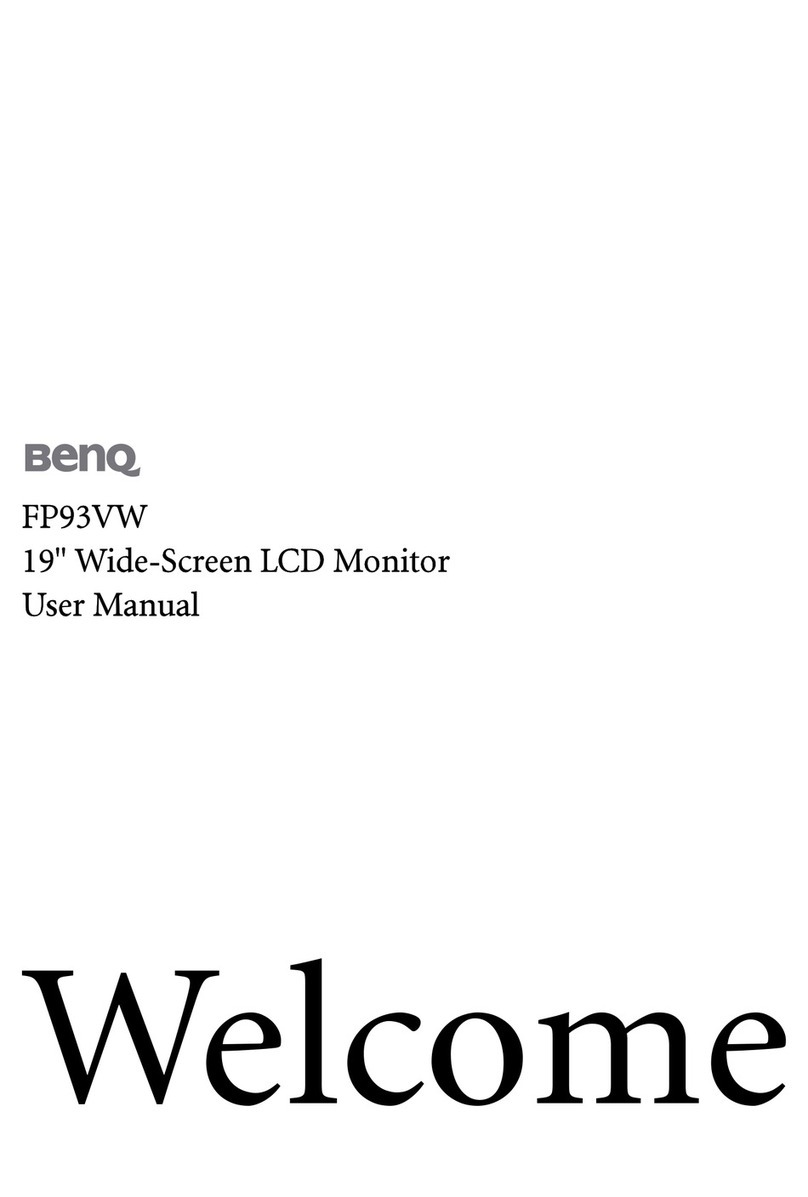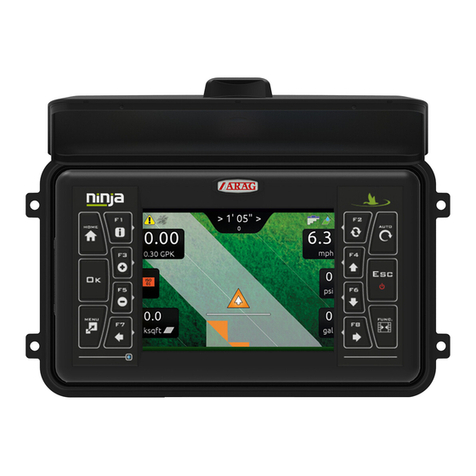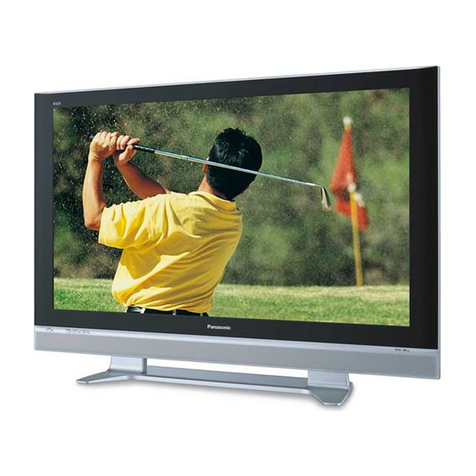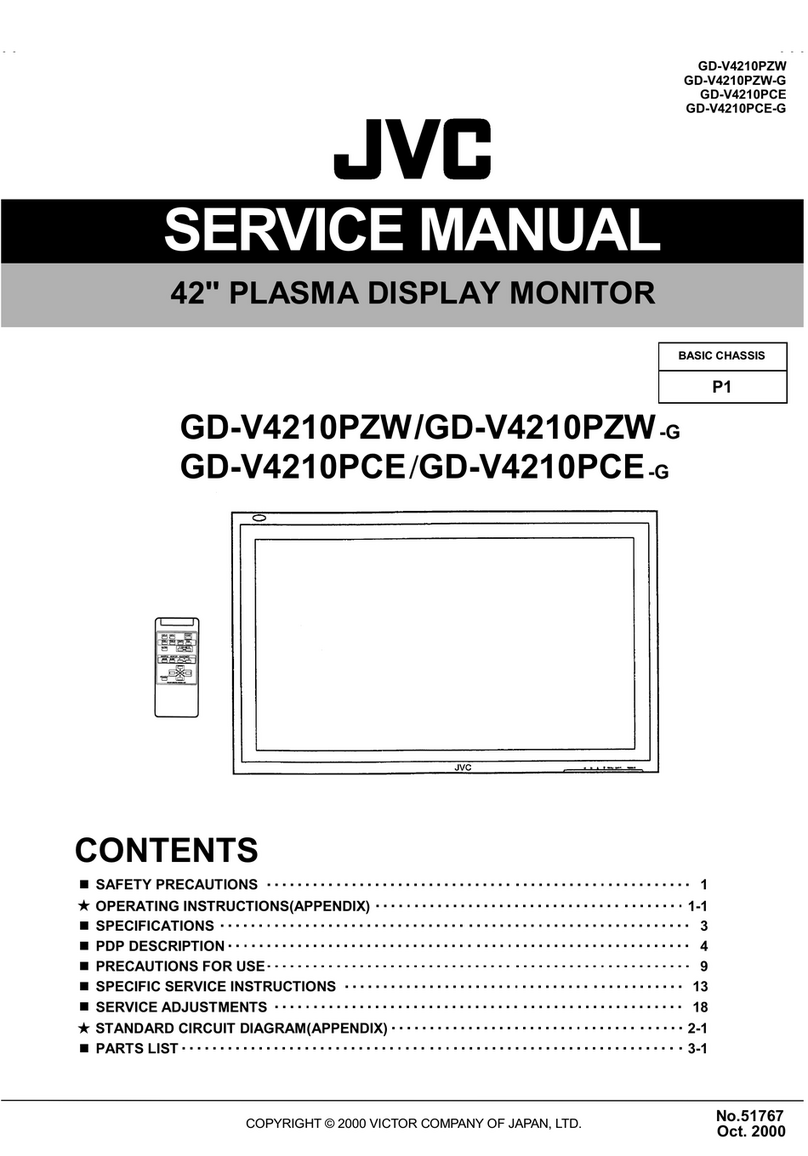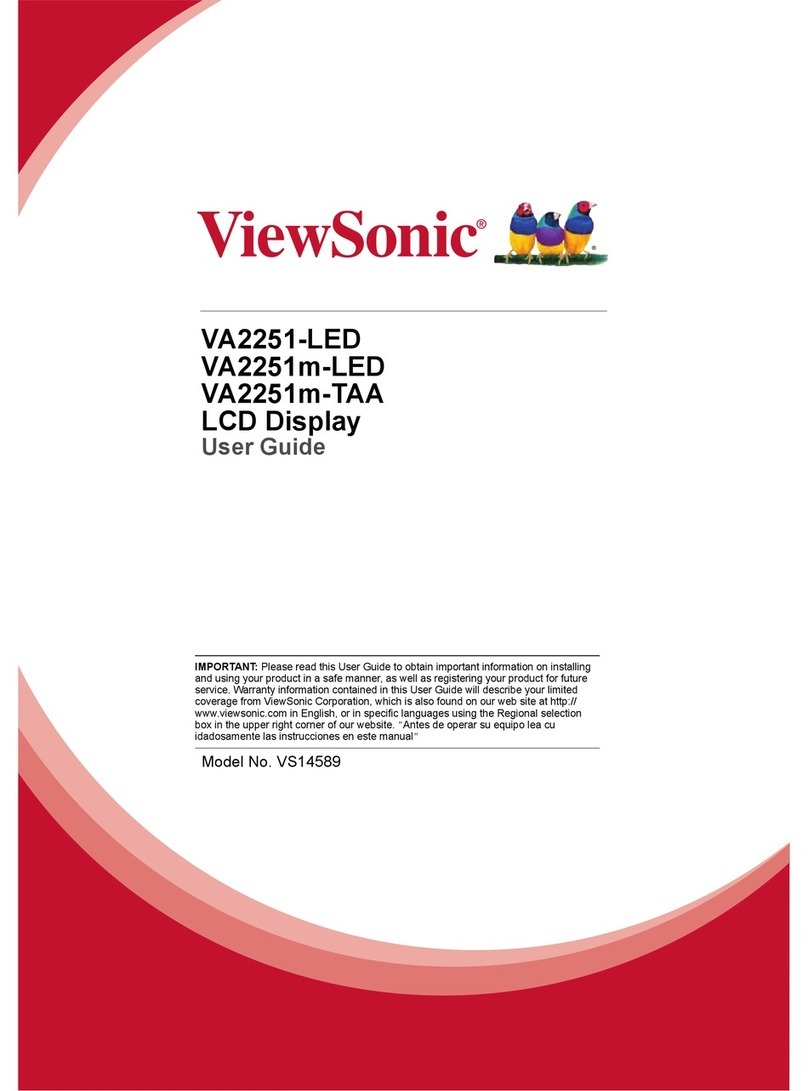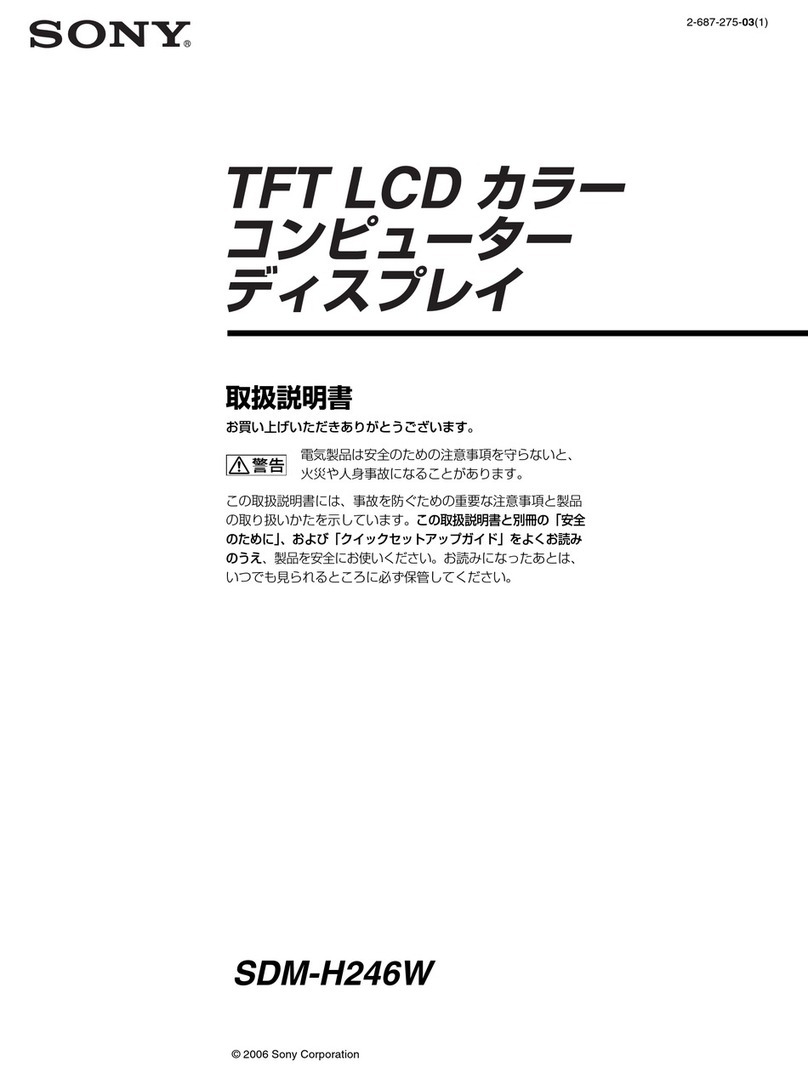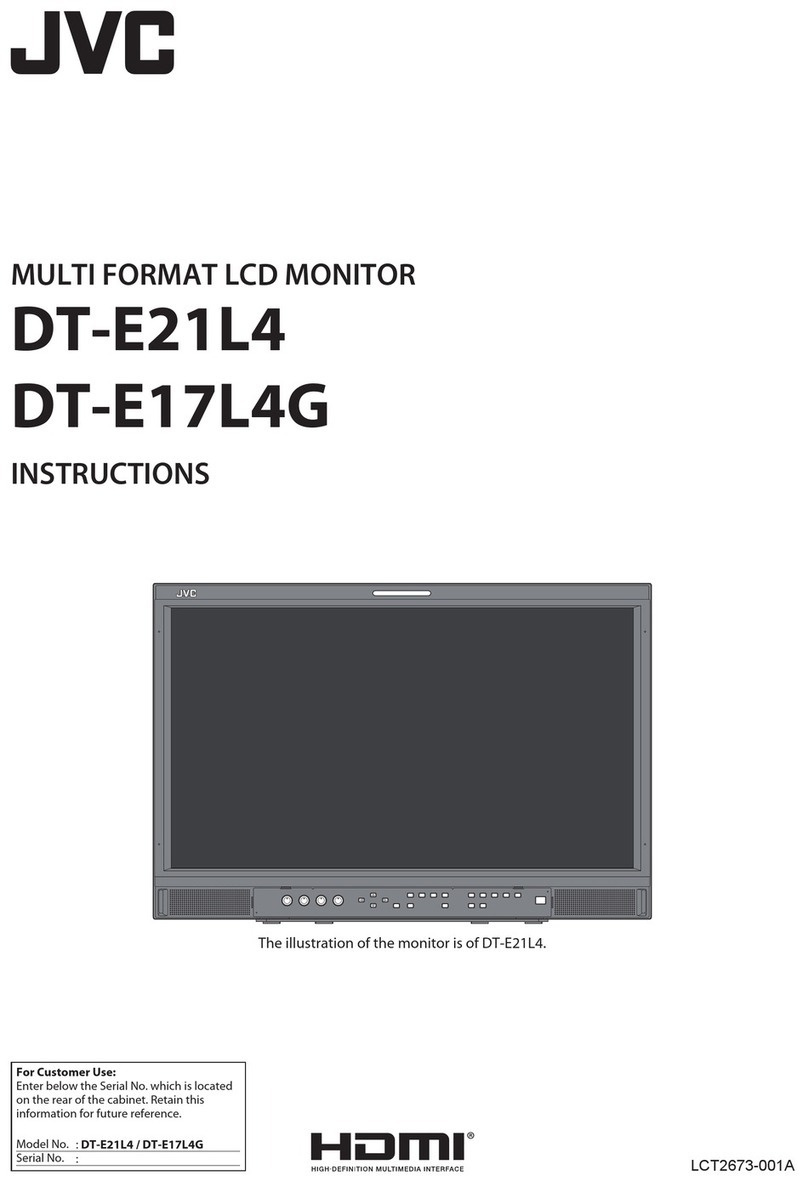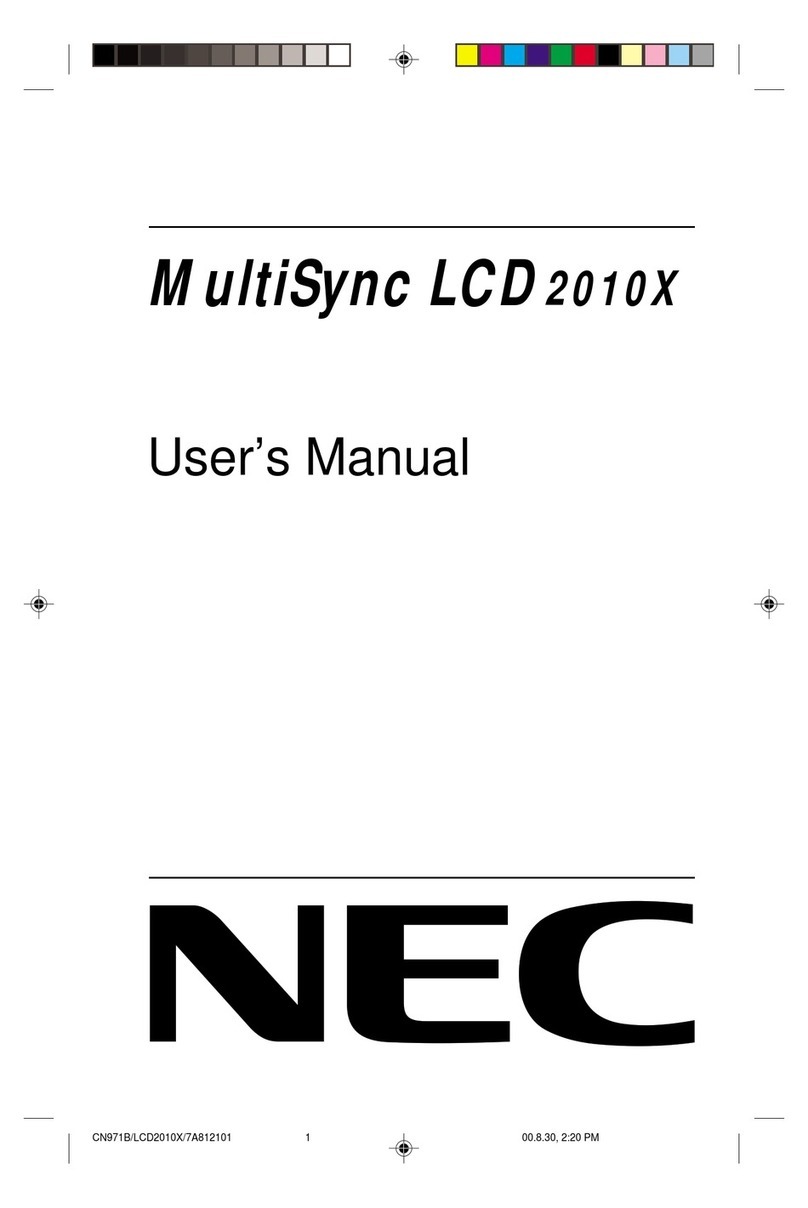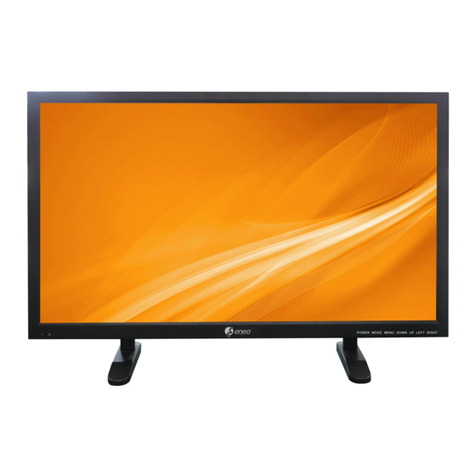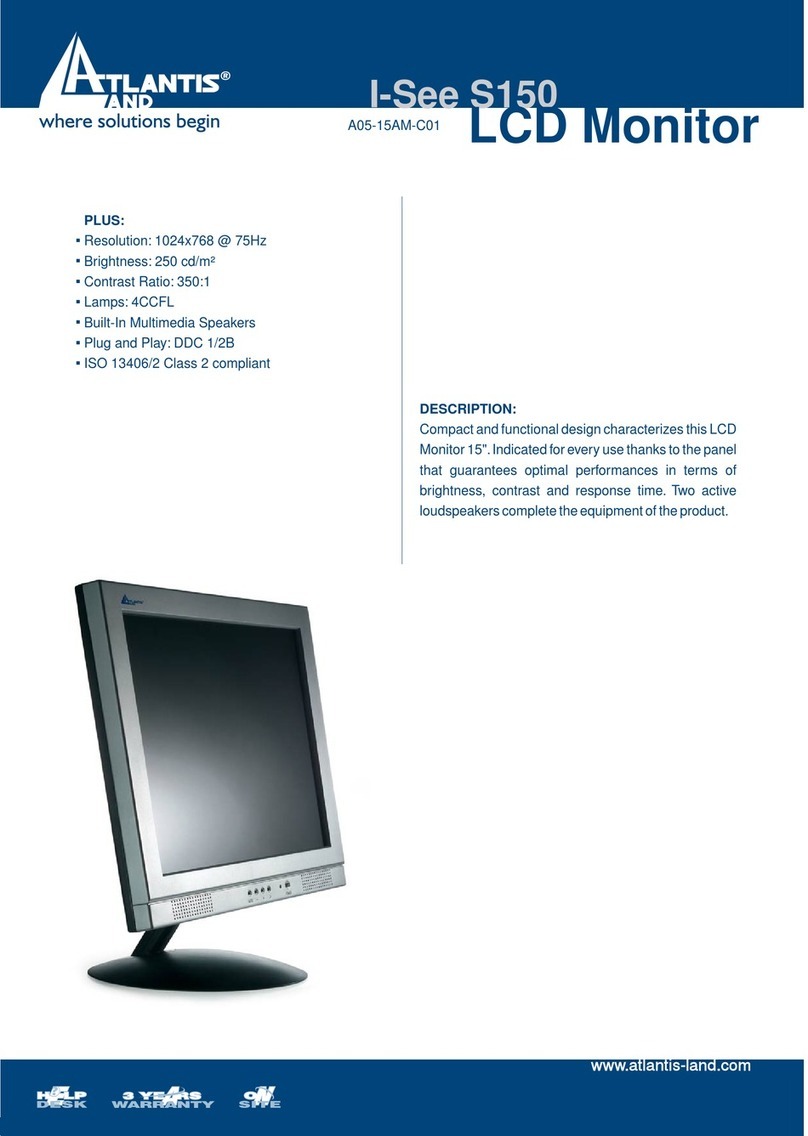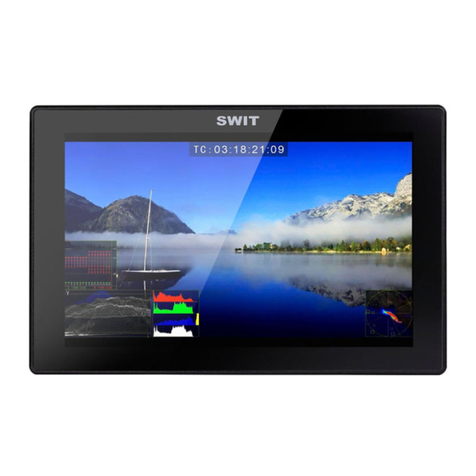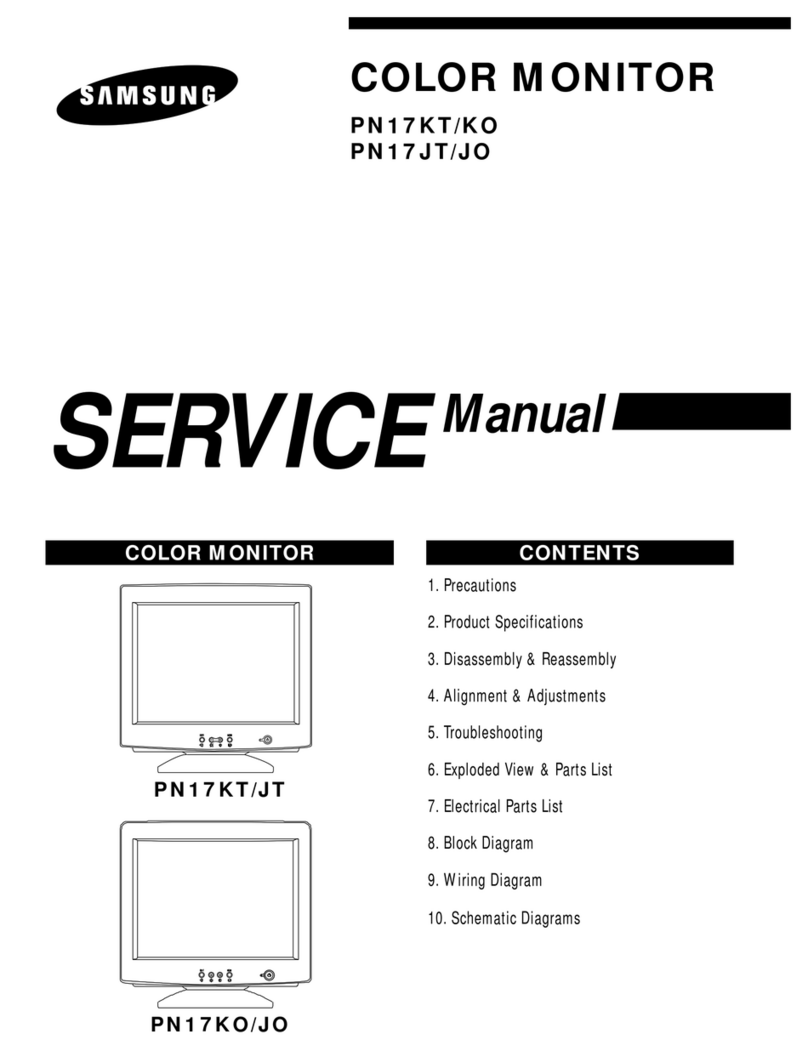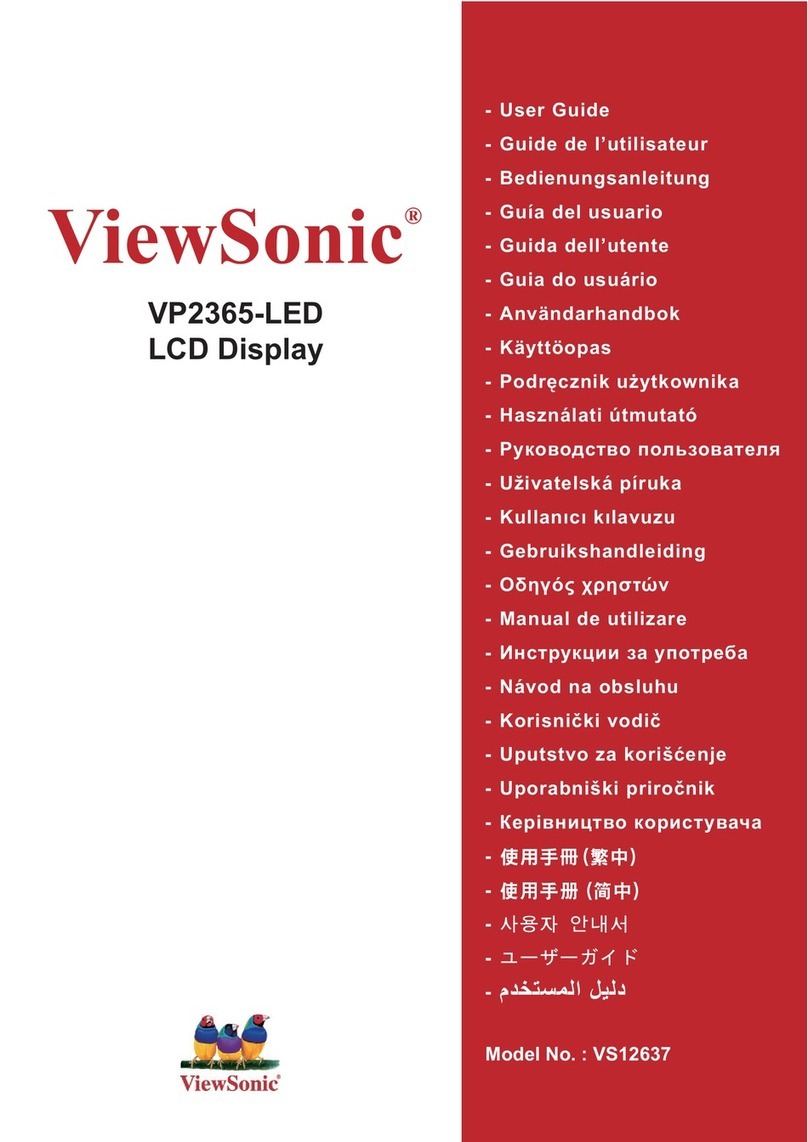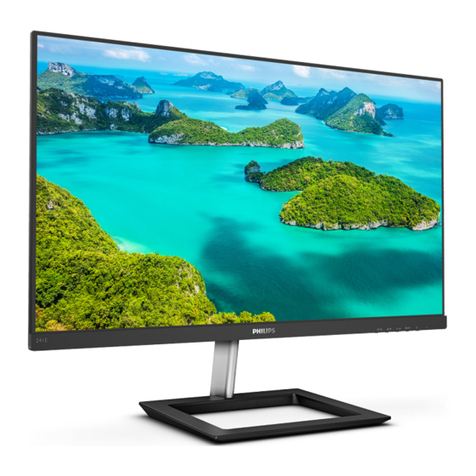Tritium CAN bus User manual

USER'S MANUAL
CAN bus LCD Display
TRI66.003 ver 2
10 April 2011
CAN bus LCD Display
User's Manual
10 April 2011
©2011 Tritium Pty Ltd
Brisbane, Australia
ttp://www.tritium.com.au
1 of 7

USER'S MANUAL
CAN bus LCD Display
TRI66.003 ver 2
10 April 2011
TABLE OF CONTENTS
1 In roduc ion........................................................................................3
2 Device Overview.................................................................................3
3 Hardware...........................................................................................3
3.1 Front panel............................................................................................................ 3
3.2 Labels.................................................................................................................... 3
3.3 Power Input...........................................................................................................3
4 CAN Bus.............................................................................................4
4.1 CAN Network Topology..........................................................................................4
4.2 CAN Wiring............................................................................................................4
4.3 CAN Connector......................................................................................................4
4.4 CAN S ielding........................................................................................................ 5
4.5 CAN Termination...................................................................................................5
4.6 Communications....................................................................................................5
5 Moun ing............................................................................................6
6 Programming......................................................................................6
6.1 Overview...............................................................................................................6
6.2 Sc ematics & Source Code....................................................................................6
6.3 Toolc ain............................................................................................................... 6
6.4 Code Download..................................................................................................... 6
7 Revision Record..................................................................................7
2 of 7

USER'S MANUAL
CAN bus LCD Display
TRI66.003 ver 2
10 April 2011
1 INTRODUCTION
T is document details t e interface, installation, and usage requirements for t e
Tritium CAN bus LCD display product. It also provides information on
programming t e device to implement custom functionality.
T e LCD display provides an easy way to s ow telemetry and control information
for a Tritium WaveSculptor motor controller. T e LCD display comes
programmed from t e factory configured wit sensible default values t at will
work in a plug-and-play manner wit a motor controller.
T e microcontroller firmware for t e device (in 'C') is available on t e Tritium
website under an open-source license, as are t e ardware sc ematics and
component overlays.
2 DEVICE OVERVIEW
T e LCD display provides a 3.5 digit 7-segment liquid-crystal interface to s ow
numbers from -1999 to 1999, wit selectable decimal point position. Up to four
different variables can be c osen to be displayed, one at a time.
T e display receives data and power via a CAN bus running at up to 1
Mbit/second, wit t e factory default at 500kbit/sec. Alteration of eit er t e bit
rate or t e addresses for various data types currently requires reprogramming
t e microcontroller, alt oug ardware support does exist to allow remote
configuration in t e future.
Four LEDs are provided on t e front panel of t e device to indicate w ic variable
is currently being displayed.
Wit appropriate modification of t e firmware, t e display is capable of reading
and displaying any variable on t e CAN bus. It is not only restricted to Tritium
devices.
3 HARDWARE
3.1 FRONT PANEL
An ad esive decal protects t e front of t e LCD and provides a single pus button
switc to select between display variables. It is backed by a 0.8mm t ickness
stainless steel plate to provide a mec anically strong mounting surface.
3.2 LABELS
Four transparent windows are present in t e decal to allow placement of a paper
label be ind t e decal. T is label is inserted at t e factory to matc t e four
variables c osen for display, and once in place cannot be removed.
If you will be programming t e display wit your own firmware, please specify
t at your display be delivered unassembled, so t at you can insert your own
labels once you ave finalised your firmware modifications.
3.3 POWER INPUT
Power for t e display needs to be supplied along t e CAN bus cable. T e display
contains an internal regulated power supply and will operate successfully wit a
supply of between 9V and 15V DC. T e display uses less t an 20mA w en
operational.
3 of 7

USER'S MANUAL
CAN bus LCD Display
TRI66.003 ver 2
10 April 2011
4 CAN BUS
4.1 CAN NETWORK TOPOLOGY
T e CAN bus is structured as a linear network, wit s ort stubs branc ing from 'T'
connectors on t e main bus backbone to eac device. T e CAN bus data lines
must be terminated at eac end of t e main bus wit 120 o m resistors between
t e CAN-H and CAN-L signals.
In t e range of Tritium EV products, including t e WaveSculptor 200, EV Driver
Controls, and LCD display, t e CAN connections are implemented wit an 'in' and
an 'out' connector, t erefore placing t e 'T' on t e device, resulting in a very
s ort fixed-lengt stub on t e circuit board of eac device. T is is ideal from a
signal integrity and network performance point of view.
4.2 CAN WIRING
T e CAN data lines (CAN-H and CAN-L) must be implemented wit twisted-pair
wire for proper data integrity. T e wire s ould ave a c aracteristic impedance
of 120 o ms.
Power s ould also be provided along t e CAN cable, ideally wit anot er twisted
pair to minimise noise pickup. An overall s ield can also be advantageous.
From a performance perspective, t e optimal c oice of cable is 7mm Devicenet
CANbus 't in' cable, wit 24AWG (data) + 22AWG (power) twisted pairs and a
braided s ield. Using t is cable will result in a robust installation. However, it is
not c eap, and using it for a large network wit many devices will quickly add up
to a significant cost. It also presents a significant mec anical load on t e
lig tweig t LCD display, and s ould be strain relieved close to t e display.
For t ose on a budget, standard CAT5 network cabling (w ic as an impedance
of 100 o ms) can be used, but may become unreliable in longer networks or in
t e presence of electrical noise from DC/DC converters and ot er electrical
devices in t e system – use t is type of cable at your own risk.
4.3 CAN CONNECTOR
T e connector used on t e LCD display, EV Driver Controls and ot er Tritium
devices is a 6-way 3mm pitc Molex MicroFit connector. T e pinout is s own
below, as viewed from t e wire side – as you would look at it w ile inserting
crimps. T e colours s own matc t ose in t e standard DeviceNet CAN cabling
pairs.
4 of 7

USER'S MANUAL
CAN bus LCD Display
TRI66.003 ver 2
10 April 2011
4.4 CAN SHIELDING
If t e recommended braided s ield is used in t e cable, t en terminate it to t e
SHIELD pin (lower-left corner on t e connector) on bot CAN IN and CAN OUT
connectors on eac device.
On one device only in t e network, instead of using t e SHIELD pin, terminate
t e s ield to t e SHIELD GROUND pin (upper-left corner on t e connector) on
bot CAN IN and CAN OUT connectors, to ground t e s ield for t e entire network
at t is single point. T e usual place to do t is is w ere power is fed into t e
network, typically at Tritium's EV Driver Con rols product.
4.5 CAN TERMINATION
To implement t e required 120 O m termination resistor at eac end of t e CAN
bus, plug a connector into t e unused CAN connector on t e last device at eac
end of t e network wit a resistor crimped into t e appropriate locations.
4.6 COMMUNICATIONS
T e CAN standard does not specify ig -level message protocols. Tritium devices
use a custom protocol, outlined in t e communication specification document for
eac device.
By default, eac device operates at 500 kbits/second, one step below t e
maximum possible data rate of 1 Mbit/second, and comes programmed from t e
factory wit a CAN base address t at will allow it to work wit out problems wit
ot er Tritium devices. Currently, modifying t e data rate or CAN base address
requires reprogramming t e microcontroller, alt oug ardware support is
provided to allow updates over t e CAN bus in t e future.
5 of 7
SHIELD
GROUND
SHIELD GROUND
CAN-H
+12V
CAN-L
(BARE) (WHITE)(BLUE)
(BARE) (RED)(BLACK)

USER'S MANUAL
CAN bus LCD Display
TRI66.003 ver 2
10 April 2011
5 MOUNTING
T e LCD display can be mounted using double-sided ad esive tape to old it into
position in a cutout in a flat panel. T e display itself is lig tweig t, alt oug t e
CAN cable may present some load and may require strain relief elsew ere on t e
panel.
T e display requires a rectangular mounting ole cutout of 60 x 40mm, wit
panel t icknesses of up to 1.5mm.
6 PROGRAMMING
6.1 OVERVIEW
T e LCD display is based around a Texas Instruments (TI) MSP430 16-bit
embedded low-power microcontroller, operating from a clock derived from a
multiplied 32.768kHz watc crystal as default. CAN bus support is provided via a
Microc ip MCP2515 CAN controller and TI SN65HVD234 CAN transceiver. T e
display is not isolated from t e CAN network.
6.2 SCHEMATICS & SOURCE CODE
Sc ematics and PCB component position overlays in PDF format are available for
download on t e Tritium website. A zip file is also provided containing t e
default source code for t e microcontroller, written in 'C' and available under a
BSD open-source license.
Please refer to t ese references if developing custom firmware for t e display.
6.3 TOOLCHAIN
T e example default code provided is configured to work wit t e freely-available
open-source MSP430 GCC toolc ain, w ic provides a command-line driven
compiler, binutils, download, and real-time debug capability t roug a JTAG
eader present on t e back of t e display PCB. Please refer to t e README file
wit t e source code for download and installation instructions.
An adapter is provided wit every display product t at converts t e TI standard
14-pin JTAG debug eader to t e smaller 8-pin flexible printed circuit (FPC)
eader used on Tritium devices. Tritium recommends t e use of t e USB
programmer part number MSP-FET430 UIF available from TI or t eir distributors,
alt oug lower cost and slower performance parallel-port devices are also
useable.
6.4 CODE DOWNLOAD
Connect t e 8-pin FPC ribbon to t e eader on t e display PCB, wit t e Pin 1
indication arrows matc ing on bot t e display and t e adapter board.
Follow t e instructions in t e README file to compile your 'C' source, produce an
object file for loading into t e microcontroller, and download t e new firmware to
flas memory in t e microcontroller. Please feel free to email any questions or
comments to James Kennedy, ja[email protected].
6 of 7

USER'S MANUAL
CAN bus LCD Display
TRI66.003 ver 2
10 April 2011
7 REVISION RECORD
REV DATE CHANGE
1 14 May 2007 Document creation (JMK)
2 10 April 2011 Modified CAN bus connector description (JMK)
7 of 7
Table of contents
